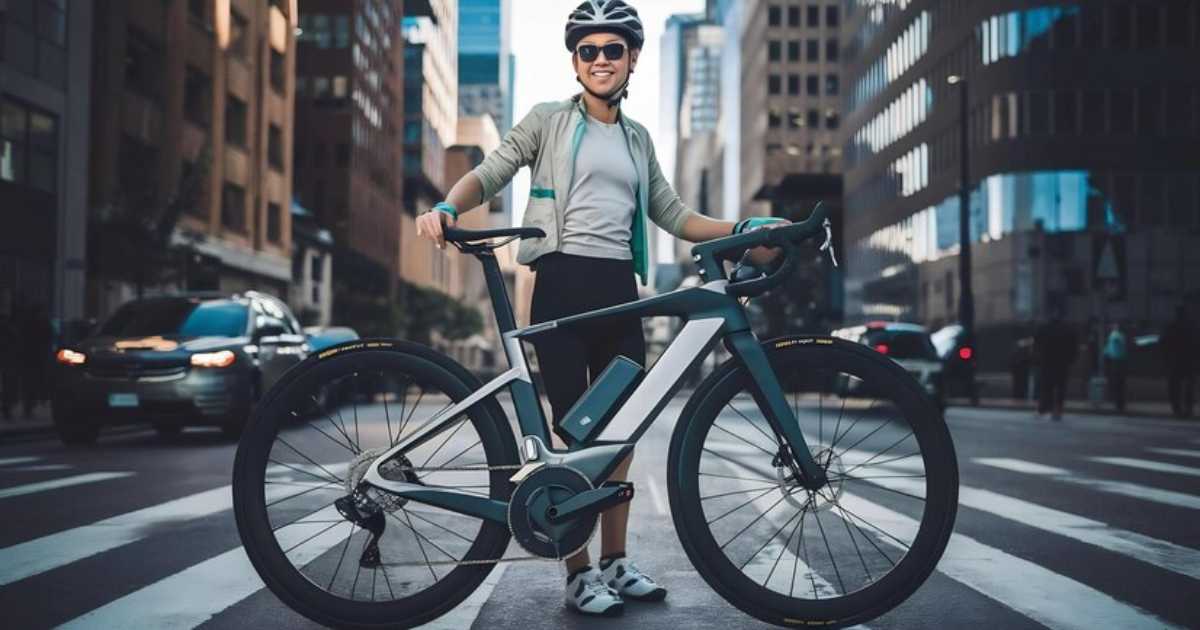Bicycle safety is a paramount concern for cyclists and motorists alike. In Florida, a crucial law aims to protect bicyclists from harm – the 3-Foot Law.
This law, outlined in Florida Statute 316.083, requires motorists to pass a bicyclist by no less than 3 feet, creating a safer distance between vehicles and vulnerable cyclists.
The Broward Metropolitan Planning Organization (MPO) has launched a public education campaign to raise awareness about this vital safety measure, encouraging everyone to practice safe behavior and improve the safety of all road users.
KEEP YOUR DISTANCE. AT LEAST 3 FEET. IT’S THE LAW!
Imagine yourself cruising along on your bicycle, enjoying the fresh air and scenery, when suddenly a vehicle whizzes past, mere inches from your handlebars.
It’s a heart-stopping moment that no cyclist should ever experience. Unfortunately, such close calls are all too common on our roads, putting bicyclists at risk of serious injury or even loss of life.
By understanding and adhering to the 3-Foot Law, we can create a safer environment for all road users.
This comprehensive guide will delve into the intricacies of bicycle safety laws in Florida, providing invaluable tips and resources to help you navigate the roads with confidence and peace of mind.
Interactive Bicycle Trip Planning Tool

Broward County’s Bike Broward Bicycle Route Planner is a game-changer for cyclists seeking safe and enjoyable routes.
This interactive bicycle trip planning tool allows you to map out your journey with ease, taking into account factors such as bike lanes, traffic patterns, and potential hazards.
By utilizing this powerful resource, you can plan your rides with confidence, minimizing risks and maximizing your enjoyment on the road.
Bicycle Tips For Parents
Instilling safe bicycling habits in children is a crucial responsibility for parents. The road to becoming a confident and responsible cyclist begins at a young age, and parents play a pivotal role in this journey.
From leading by example and practicing safe riding techniques together to addressing common issues like bike sizing and equipment maintenance, this section will provide invaluable guidance to help your little ones develop the skills and awareness needed to navigate the roads safely.
FLORIDA’S BICYCLE SAFETY LAWS
Understanding and adhering to Florida’s bicycle safety laws is essential for all cyclists and motorists.
These laws not only ensure your safety but also protect the rights of bicyclists on the road.
LEGAL STATUS
In Florida, bicycles are legally defined as vehicles, granting cyclists the same rights and responsibilities as operators of other vehicles.
This means that bicyclists must obey all traffic laws, including stopping for stop signs and red lights, riding with the flow of traffic, and yielding the right-of-way when entering a roadway.
SAFETY EQUIPMENT
Proper safety equipment is crucial for protecting cyclists and increasing their visibility on the road.
Florida’s laws mandate the use of helmets for cyclists and passengers under the age of 16, as well as specific lighting requirements for nighttime riding.
This section will cover recommended safety gear such as gloves, mirrors, safety flags, and rear carriers, empowering you to take proactive measures for your well-being.
TRAFFIC LAW HIGHLIGHTS – See F.S.S. 316.2065

Florida’s traffic laws are designed to promote safe and responsible bicycling practices.
This section will delve into the key highlights, including bicycle regulations, sidewalk riding rules, lighting requirements, and more, ensuring you have a comprehensive understanding of your rights and responsibilities as a cyclist.
Bicycle regulations
Bicyclists in Florida must adhere to specific regulations to ensure their safety and the safety of others on the road.
These regulations cover essential aspects such as obeying traffic controls and signals, using a fixed, regular seat, and carrying passengers safely.
By familiarizing yourself with these guidelines, you can cultivate a culture of responsible cycling and contribute to a safer riding environment for all.
Sidewalk Riding
While sidewalks may seem like a safer option for bicyclists, they come with their own set of hazards and regulations.
This section will explore the rules governing sidewalk riding, including the need to yield to pedestrians and give audible signals when passing.
By understanding these guidelines, you can navigate sidewalks responsibly and minimize potential conflicts with pedestrians.
Lighting
Visibility is crucial for cyclists, especially when riding during low-light conditions. Florida’s laws mandate specific lighting requirements for bicycles operated between sunset and sunrise.
This section will cover the details of these requirements, ensuring you are equipped with the necessary equipment to enhance your visibility and reduce the risk of accidents.
Roadway Position
Proper positioning on the roadway is essential for cyclist safety and smooth traffic flow.
This section will outline the guidelines for roadway positioning, including riding as close as practicable to the right-hand curb or edge, and the exceptions that allow cyclists to leave the rightmost portion of the road, such as when passing, making left turns, or avoiding hazards.
Left Turns (see F.S.S. 316.155)
Executing left turns can be one of the most challenging maneuvers for cyclists. This section will provide detailed guidance on the proper procedures for making vehicle left turns, including lane positioning, signaling, and safe execution.
By following these guidelines, you can navigate left turns with confidence and minimize the risk of collisions.
Signaling Turns (see F.S.S. 316.155)
Clear communication with other road users is vital for cyclist safety. This section will cover the proper techniques for signaling your intention to turn, ensuring that motorists and fellow cyclists are aware of your movements.
By mastering these signals, you can enhance predictability on the road and reduce the likelihood of accidents.
Headsets (see F.S.S. 316.304)
While listening to music or podcasts can make long rides more enjoyable, it can also pose a significant safety risk by blocking out important audio cues from surrounding traffic.
This section will explore Florida’s laws regarding the use of headsets and headphones while cycling, ensuring you stay informed and prioritize your safety on the road.
Civil Penalties (see Subsections 316.2065 and 318.18 F.S.)

To reinforce the importance of bicycle safety laws, Florida has implemented civil penalties for violations.
This section will provide an overview of these penalties, helping you understand the potential consequences of non-compliance and motivating you to prioritize responsible cycling practices.
Local Ordinances
To state laws, many local governments in Florida have adopted their own ordinances regulating bicycle riding.
This section will highlight the importance of familiarizing yourself with local ordinances, which may include specific regulations for sidewalk riding, registration, licensing, and prohibited areas.
Also Read This Post:
FAQ’s
Why is the 3-Foot Law important for cyclist safety?
The 3-Foot Law helps create a safer distance between vehicles and bicycles, reducing the risk of collisions and injuries.
Are helmets mandatory for all cyclists in Florida?
No, helmets are only mandatory for cyclists and passengers under the age of 16 in Florida.
Can bicyclists ride on sidewalks in Florida?
Yes, but they must yield the right-of-way to pedestrians and give audible signals when passing.
What are the lighting requirements for nighttime cycling in Florida?
Bicycles must be equipped with a front white light, rear red reflector, and rear red light when operated between sunset and sunrise.
Are there any local ordinances regarding bicycle riding that I should be aware of?
Yes, many local governments have their own ordinances regulating sidewalk riding, registration, licensing, and prohibited areas for bicycles.
Final Thoughts
Bicycle safety is a shared responsibility that requires cooperation and understanding from both cyclists and motorists.
By adhering to the 3-Foot Law and the comprehensive bicycle safety laws in Florida, we can create a safer and more harmonious environment on our roads.
Educating ourselves on proper road etiquette, utilizing resources like the Bike Broward Bicycle Route Planner, and leading by example for our children, we can cultivate a culture of respect and safety for all road users.
Even the smallest actions can make a significant difference in preventing accidents and saving lives.

I’m passionate electric scooter enthusiast and the voice behind this blog. I’m here to share my expertise and insights with you. From in-depth reviews to problem-solving guides, my goal is to help you make the most of your electric scooter experience.








![Gomyfinance.com Invest: I Made $5,000 in My First Month [Real Results 2025]](https://electopolo.com/wp-content/uploads/2025/05/Gomyfinance.com-Invest-I-Made-5000-in-My-First-Month-Real-Results-2025-150x150.jpg)


